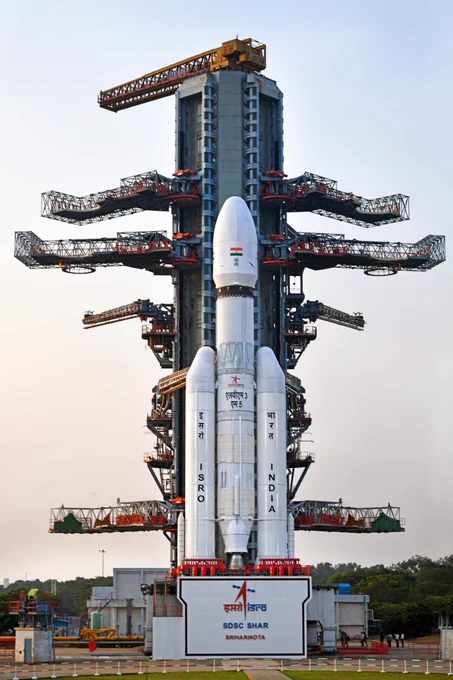Raktbandhu - Save a Life, Donate Platelets Madan Mohan fan
Joined May 2025
- Tweets 383
- Following 112
- Followers 3
- Likes 717
Railfan retweeted
The latest #Planet blog coverage touches on reverse-engineering 90s #games, #quantum computing in #opensource, a #Tenerife #LanParty & more. news.opensuse.org/2025/11/07…
🔓Vendor lock-in? Not on our watch 🚫
Join us at #SUSERancherDay to experience the #opensource, unified platform that works across every #K8s distribution, anywhere you need it.
🗓️ When: Nov 10 | 12:00 PM – 7:00 PM EDT
📍 Where: Hilton Garden Inn ATL
👉okt.to/68hT92
🔓 Vendor lock-in is back — even in the cloud. It limits agility, innovation & cost control.
✅ The fix? A truly open strategy.
🔁 Interoperable
🔐 Secure
💡 Future-ready
📖 Learn how to break free: okt.to/p18Qrh
#OpenSource #CloudNative #DigitalSovereignty #EnterpriseTech #SUSE
Is your IT strategy built for business agility? SUSE helps IT leaders run what they need, where they want:
✅ Open
✅ Efficient
✅ Zero-trust secure
▶️ Learn more: okt.to/rnpFyq
#SUSE #CloudNative #EnterpriseTech #OpenSource
Meet our colleagues leading the discussion at #KubeCon + #CloudNativeCon NA 2025! 💚 @Divya_Mohan02, @mattfarina, @OrlinVasilev, @_psaggu, @robertsirc, and Shuo Wu will share insights on @kubernetesio, @longhorn_io, @HelmPack, and more! 👉okt.to/WPZqaH
🎩Architecting secure platforms isn't magic, it's expertise🔐
Don't miss the session by Jeroen Van Erp & @robertsirc on leveraging #opensource & @CloudNativeFdn projects for architecture mastery⚒️
Join us to get the how-to 👉 okt.to/AQqn3R
#KubeCon #SUSE
🔐 Scaling stateful apps on Kubernetes?
📘 Discover how SUSE + @portwx help you protect and scale containerized apps — with built-in backup, recovery, and resilience for Kubernetes:
✅ Protect against ransomware
✅ Encrypt data end-to-end
✅ Lock down access controls
👉 Download now & secure your workloads! okt.to/dSfER7
#SUSE #KubernetesSecurity #DataSecurity
Railfan retweeted
Hack Week 25 is coming Dec 1–5! #openSUSE’s annual #event invites contributors, companies, and curious hackers to build, explore, and collaborate across dozens of #opensource projects. Find a project or start your own hackweek.opensuse.org
🔐 Strengthen your SAP landscape with SUSE-certified security & compliance.
SUSE experts share how to:
🔹 Meet NIS2 compliance
🔹 Achieve EAL4+ certification
🔹 Strengthen supply chain security
🔹 Patch live — with zero downtime
👉 Save your spot now! okt.to/ljVrtm
#SAP #Security #Compliance
Railfan retweeted
Android runs on a Linux kernel, but how close are they really? 🤔 embeddedinventor.com/android… If you’re curious about how #Android and #Linux connect, and want to help shape #development, join the #openSUSE mobile community. t.me/opensusemobiledev
🤖 Sequence initiated. All systems go. ✅
💪🏻 Join us at #KubeCon + #CloudNativeCon next week to explore how our projects deliver powerful, secure, and simple #K8s management from core to edge
Let's discuss how to make cloud native work for you!🤝
👋 See you in Atlanta!
🧠 Future-proof your IT with SUSE Virtualization!
🎧 On The Future is Open, Alejandro Bonilla shares how SUSE handles:
🔹 RHEL/CentOS VM migration
🔹 AI workloads (vGPU)
🔹 GitOps ops
👉 Listen now: okt.to/EyenYQ
#SUSE #Virtualization #OpenSource
SUSE Linux Enterprise Server 16 just dropped 🚀
💪 Enterprise Linux, but smarter, stronger and cloud-resilient.
❇️ AI-ready with MCP
❇️ Rollback to the cloud
❇️ Updatable kernel
❇️ Pre-configured images
❇️ Verifiable supply chain and longer lifecycle
We made Linux better than ever 👉 okt.to/KCw2AL
#SUSE #SLES16 #Linux
Congratulations #TeamIndia. #WorldCupWinners
Take a bow @TheShafaliVerma. Came into the knockouts and won the Player of the Match in the finals
Gr8 all-round play Deepti Sharma, Player of the Series.
#WomensWorldCup2025 .
Interesting insights into a monument that draws admirers from around the world. If you are a student of history or have any interest in history, this is a must read. Thank you @Aabhas24 for taking the efforts in compiling this.
1/4 Long Thread!
Since #TheTajStory starring @SirPareshRawal directed by @TusharAmrish has released, countless people have rushed to make podcasts and articles trying to discredit everything the film presents.
So, I thought it’s time to begin a detailed thread on “The Real History of the Taj Mahal”, one that may unsettle many popular beliefs.
Before diving into historical documents, let’s clear one thing: the Taj was never built as a symbol of love. That romantic tale is pure fabrication.
Even the most cited scholarly work; “Taj Mahal: The Illumined Tomb — An Anthology of Seventeenth-Century Mughal and European Documentary Sources” by W.E. Begley and Z.A. Desai completely rejects the “love story” narrative.
Ironically, these very authors are often invoked to support it. Begley and Desai not only question the myth that Shah Jahan’s hair turned white from grief after Mumtaz’s death (as also claimed in one of the recent podcast), but they also argue that the Taj’s conception had nothing to do with personal loss or love.
According to them, the Taj Mahal was designed as a symbolic representation of paradise; a grand stage for Judgement Day, not a tomb of mourning. Shah Jahan, they assert, envisioned himself as a Khalifa, and therefore modeled the structure after a Timurid throne, with the inverted lotus atop the dome represented the ruler’s crown.
In fact, Wayne E. Begley, in his seminal paper “The Myth of the Taj Mahal and a New Theory of Its Symbolic Meaning” (The Art Bulletin, Vol. 61, No. 1, March 1979), begins by urging scholars to re-examine the entire history of the Taj Mahal (check image 2). Right at the outset, Begley makes it clear—the structure was never intended as Mumtaz’s burial monument.
Now, let’s walk through some fascinating historical records that most people conveniently overlook.
I have noticed that nearly every self-proclaimed “historian” of the Taj Mahal confidently repeats the same claims, how many years it took to build, how many artisans worked on it, and so on. But the crucial question is—where do these numbers actually come from?
They trace back to Jean-Baptiste Tavernier, a French merchant and traveler, who asserted that the Taj Mahal took 22 years to build and employed 20,000 workers. Tavernier even boasted that he had witnessed the construction “from commencement to completion.” Take a look at the snippet (image 3) from Volume I of his works.
He further wrote that Shah Jahan “purposely buried Mumtaz at the Taj-i-Macan (Taj Mahal)” so that the world might marvel at her burial site, adding that even in his time, foreigners flocked to see the structure, just as they do today.
Now, this statement is extremely revealing. If, by 1640–41, Tavernier was already describing the Taj Mahal as a site attracting visitors from across the world, it implies one simple fact, the monument existed long before Mumtaz was buried there. Shah Jahan merely chose it as her resting place because it was already an established and admired structure.
Let’s also examine Tavernier’s own timeline. He was in Agra around 1640–41, and again in 1651–52. Curiously, in his later visit, he says nothing about the Taj Mahal, no mention of construction, progress, or completion. For someone who claimed to have observed the entire process “from beginning to end,” this silence is deafening.
Moreover, if we take Tavernier’s claim literally, that he saw both the start and finish of construction, then the Taj’s work should have begun in 1640 and ended around 1662. But Tavernier was nowhere near Agra in 1662; by then, he was traveling in the Deccan and Persia, and his writings from that period make no reference to Agra at all. He was again in Agra in 1665 which means that by that logic construction should have begun in 1642.
Therefore, if Tavernier was right about his personal observation, then the official claim that construction began in 1631 collapses entirely. The timelines don’t add up.
E. B. Havell, the Principal of the Government School of Art, Calcutta, in 1904, echoed the same figures; 22 years of construction and 20,000 workers, directly citing Jean-Baptiste Tavernier as his source.
A few years later, Vincent A. Smith, in his “History of Fine Arts in India and Ceylon” (1911), repeated the exact same claim, again tracing it back to Tavernier’s account.
In other words, the widely circulated narrative about the Taj Mahal’s construction period and workforce isn’t based on any contemporary Timurid (Mughal) record, imperial Farman, or architectural document, it rests entirely on a single secondary account by a 17th-century European traveler, whose own timeline and claims, as we have seen, are riddled with inconsistencies.
Thus, what has been parroted for over a century in mainstream history books is not verified evidence, but rather a chain of repetition, where one author simply inherits and amplifies the claims of another starting with Tavernier’s unreliable narrative.
I'll bring in light words of other travelers who visited Agra around same period.
One such traveler was Fray Sebastian Manrique. He was a Portuguese missionary who spent four weeks in Agra between December 1640 and January 1641. His account (refer to Travels of Fray Sebastien Manrique 1629-1643: A Translation of the Itinerario de las Missiones Orientales. Volume II: China, India etc), the only eyewitness records that actually mentions the Taj Mahal’s construction describes “a vast, lofty, circular structure” set within “a huge square-shaped enclosure.”
But here is where it gets interesting. How many men did Manrique actually see working on the site? He writes--
“On this building, as well as other works, a thousand men were usually engaged.”
Yes, you read that right, “a thousand men.”
That figure isn’t just a minor discrepancy, but it is a dramatic contradiction to Jean-Baptiste Tavernier’s famous claim that 20,000 workers labored on the monument. And Manrique’s detailed description of what these men were doing only deepens the puzzle:
“Many were occupied in laying out ingenious gardens, others planting shady groves and ornamental avenues; while the rest were making roads and those receptacles for crystal water, without which their labour could not be carried out.”
Notice what’s missing? No mention of masons, stonecutters, or bricklayers. None of the trades you would expect if the Taj Mahal were truly under massive construction. And yet, Manrique observes that the structure was “still incomplete, the greater part of it remaining to be done.”
If his account is accurate, it is deeply inconvenient because both Tavernier and Manrique were in Agra around the same time, even travelling by the same route from Dacca. How could two witnesses of the same period describe such vastly different scenes?
Now let me tell you how historians have tried to explain it.
Vincent A. Smith, in his attempt to defend Tavernier, wrote:
“The number (20,000) rests on Tavernier’s excellent authority. According to Manrique, the staff of workmen numbered only 1,000 in 1640. No doubt the numbers varied much from time to time.”
The translators of Manrique’s travels go even further to undermine him, claiming:
“Manrique’s figure is certainly a rough one. …Tavernier says 20,000 men worked incessantly. Manrique, however, is writing long after and without notes, and again his visit seems to have been but cursory.”
But this explanation is plainly false. Manrique wrote his account within a year of returning from his travels in 1641; hardly “long after.” And as for his visit being “cursory,” that assertion is baseless. It seems more likely that his testimony was simply too inconvenient to fit the established myth.
And if Manrique’s reliability is questioned, what about other travelers?
Consider Albert de Mandelslo, a German who visited Agra in October–November 1638. If the Taj Mahal’s construction truly began in 1631, by 1638 the site should have been alive with thousands of workers and visible progress.
Yet Mandelslo, an otherwise detailed chronicler—mentions nothing about the Taj Mahal.
Interestingly, Mandelslo does not ignore Agra or Shah Jahan’s court far from it. He gives a meticulous account of the Red Fort, describing it in vivid detail. He also lists the immense Mughal treasures stored there"
“…diamonds, rubies, emeralds, statues of gold, brass, copper, brocades, books, artillery, horses, elephants, and other valuables.”
Mandelslo goes on to describe the king’s ministers and their duties, the organization of the cavalry, artillery, and palace guards, and even the grand celebrations of Nauroz and the emperor’s birthday festivities. He paints a rich, bustling picture of the Timurid capital under Shah Jahan’s rule, filled with splendor, ceremony, and spectacle.
He even recounts the extravagant animal combats staged for the emperor’s amusement:
“…fights of lions, bulls, elephants, tigers, and leopards arranged by Shahjahan.”
And yet, amidst all these detailed observations of Agra’s grandeur, there is not a single word, not even a passing reference, to the Taj Mahal or to any construction activity related to it.
Do historians ever refer to Mandelslo? Some do, but most quietly sidestep the most telling fact: he says nothing at all about the Taj Mahal.
A few, however, try to explain away his silence. For instance, Fergus Nicoll writes in his book "Shah-Jahan: The Rise and Fall of the Mughal Emperor":
“Despite providing detailed observations on life in Agra, Mandelslo apparently did not visit the Taj Mahal (then in its sixth year of construction). The omission may be explained by his premature departure from the city, prompted by a chance meeting with the relative of a man he had killed in Persia. Fearing reprisals (and notwithstanding the efforts of servants and colleagues to lie on his behalf), he retreated to Lahore before continuing his journey to the Far East.”
In other words, we are asked to believe that a man who offered painstaking details about life, people, and events in Agra, who chronicled the Red Fort, royal ceremonies, ministers, and menageries, somehow missed the most magnificent construction site of his age because he had to flee from a vengeful Persian’s relative, despite his servants being ready to “lie on his behalf.”
It’s an absurd stretch of logic.
So, we are left with three major accounts:
A) One (Tavernier) that is internally inconsistent and unverifiable,
B) Another (Manrique) that directly contradicts the first, and
C) A third (Mandelslo) that makes no mention whatsoever of this supposed architectural marvel rising in the heart of Agra.
Three contemporaries. Three different stories. And together, they expose how fragile and fabricated the accepted timeline of the Taj Mahal’s construction truly is.
Oddly enough, Peter Mundy, the English traveler who was in India at the time of Mumtaz Mahal’s death (and makes strong remarks also about the famine engineered by Shahjahan that made 7.4 million perish) makes no mention whatsoever of it. Not even a passing remark.
For a queen who is said to have been the emperor’s “beloved consort,” whose death supposedly plunged Shah Jahan into inconsolable grief and white-haired despair, such silence is astonishing. One would expect a traveler as observant as Mundy to note the shock, the mourning, or the imperial lamentations that must have followed. Yet, there is nothing, no reference to the tragedy, no hint of public mourning, no word of the grand project that was allegedly born of love and loss.
And surely, if the official narrative were true, that construction of the Taj Mahal began soon after Mumtaz’s death in 1631 then Mundy, who was in Agra around 1632–33, should have witnessed the early stages of the construction.
So, what does he say about the Taj Mahal?
Peter Mundy writes in his journal (refer image 4):
“(In Agra) places of noate… are the Castle, King Ecbars [Akbar’s] Tombe, Tage Moholls Tombe, Gardens and Bazare.”
Isn’t it strange that a tomb whose construction had supposedly begun only a few months earlier was already listed among Agra’s “places of note”?
But wait, Mundy adds more.
“This Kinge is now buildinge a Sepulchre for his late deceased Queene Tage Moholl.”
So, yes, we do have an apparent reference to the Taj Mahal being under construction. It seems, at first glance, to confirm the traditional story until one begins to look closer.
Mundy continues:
“The buildinge is begun and goes on with excessive labour and cost, prosecuted with extraordinary diligence, Gold and silver esteemed comon Mettall, and Marble but as ordinarie stones.”
This observation was likely made in early 1633, shortly after Shah Jahan’s return to Agra in June 1632. It’s improbable that any real construction began before October 1632, given the monsoon season. Yet, for a project of this magnitude, one would expect major foundational work—massive excavations, laying of structural bases, digging of wells to anchor the load.
Curiously, neither Mundy nor Mandelslo, both meticulous observers make any mention whatsoever of foundation work. And yet, we know from later studies that the Taj Mahal does have foundations, built on masonry wells to support its weight.
So, the question arises: why didn’t Mundy, who described everything else in detail, note such a crucial phase of the construction? Did he simply overlook it—or was it already there before work began?
Then comes the next anomaly. Mundy refers to marble being used so abundantly that it was treated as “ordinarie stones.”
But here is the catch, the Taj Mahal isn’t built of marble?
Contrary to popular belief, the structure is primarily brick and red sandstone; the marble merely forms a veneer, a decorative skin laid over the structural frame.
So how could Mundy have seen marble being used “as ordinary stone” barely a few months into construction especially when the building was already considered a “place of note,” (of course a normal burial will not attract people) mentioned in the same breath as the Red Fort and Akbar’s Tomb?
That leaves us with one final oddity, one that turns the accepted story on its head.
As some of you may know, the English East India Company maintained a trading factory in Agra from 1618 to 1655, precisely the years during which the Taj Mahal was supposedly being constructed.
And yet, in all the official company records from that period, there is not a single reference to the Taj Mahal, Mumtaz Mahal, or even to “the tomb of Shah Jahan’s queen.” Not a line, not a note, not an allusion.
This silence is nothing short of astonishing. The English kept meticulous records of trade, prices, politics, architecture, and even local gossip. For them to make no mention whatsoever of what would later be hailed as one of the most magnificent monuments on earth is, at the very least, baffling.
Equally striking is the silence of the Dutch East India Company (though their record talks of grand famine created by Shahjahan that killed 7.4 million people, the same has been cited in my book-- "Babur: The Chessboard King"). To date, no historian has cited anything from their detailed archives about the Taj Mahal either suggesting that their records, too, are completely blank on the subject.
Isn’t that odd? Very odd.
And so, one is forced to ask a disquieting question, one that conventional historians prefer to avoid:
Could it be that when Shah Jahan claimed to have “built” the Taj Mahal, he was not constructing a new monument at all, but rather repurposing an existing structure?
Perhaps the brickwork of the central edifice, the foundations, and even the layout of the complex were already in place, long before Shah Jahan began his so-called “construction.”
If so, then what he actually did was not the building of the Taj Mahal, but its transformation, an imperial act of reappropriation, not creation.
@KumariDiya , ji indeed knew what she said when she spoke about the property issue were the Taj sits today.
Launch Day for #LVM3M5. India’s heavy-lift rocket launches #CMS03 today at 17:26 IST.
Youtube URL: piped.video/live/yAR9fV48Hjw
🗓️ 2 Nov 2025 (Sunday)
🕔 4:56 PM IST onwards
For more Information Visit
isro.gov.in/LVM3_M5_CMS_03_M…
Proud of our Army 💪
*A Heartwarming Story From Indian Army*
One Grizzly Bear (Himalayan Brown Bear) family used to visit us at xxxx post in Siachen. Initially, only during nights.
We started keeping food for the family.
Their confidence in us developed over a period, and they even started coming during day.
There was also a bear cub about an year old. It used to come with his mother, but after about 6 months, it was either deserted by the mother or got lost. Then it started roaming alone, but it had problems, since the dogs in the post wouldn't let it come close.
When we saw this, we started tying the dogs. The confidence grew and it started to come close.
We named him Bahadur after the Company's name- Bahadur Company.
For a few days, we couldn't see Bahadur. One day, one of my posts, which used get cut off due to 60 feet of snow, reported that Bahadur is roaming around with his head stuck in a tin box.
This post was about 800 metres from my Company Headquarter.
I took 6 boys with me and went to rescue the bear myself. It's not that I wasn't concerned about boys safety; but I still decided to do the rescue.
When we reached the place, the bear was roaming with the tin box around its head, over a cornice probably without food for last 3 days. It was making circles on the cornice. _(Cornice - An overhanging mass of hardened snow at the edge of a mountain precipice.)_
Basically, cornice is a false extension of ground made by hard snow over a period of time, and it can't take too much weight.
It can break off and can lead to an Avalanche.
So, it was very difficult to go closer to the bear to rescue it.
I found the lightest boy from my group and briefed him to go close to the bear and tie the rope around his neck.
We also tied a rope to the waist also to pull him in case the cornice breaks down.
This boy was nervous to get close to the bear.
After about over 3 mins, I decided to rescue the bear on my own.
The bear was approached by me on my knees and I pulled him out of the cornice as quickly as possible to avoid breaking off the cornice.
After bringing the bear to safety, we tied it with ropes to take it to our xxxx post, where we could release him after removing the tin box.
It took almost a kind of surgery to cut the tin box without damaging the ears and neck of the bear.
We gave him food and released him after taking all safety precautions. When we released him, he didn't go away for a good 3 hours.
But after that it became part of my Company.
Whenever we shouted his name -Bahadur, it always appeared from nowhere.
It still comes to the post for food.
Although the Story is very Heartwarming, please do also take a moment to appreciate the very difficult conditions and the environment the Indian Army is guarding our Borders. Furthermore, do also see and acknowledge the accommodation they are staying with bare minimum amenities. It takes a special kind of men to do this.
A big Salute to the Soldiers of the Indian Army. Jai Hind!
Some videos👇🏼
Railfan retweeted
Pulinkunnu erupts with power and passion as Kerala's top oarsmen face off for glory. Don't miss the ultimate test of strength!
#ChampionsBoatLeague2025 #CBL2025 #ChampionsBoatLeague #GreatBackwaters #BackwaterGrandPrix #SnakeBoatRace #KeralaTourism
🖥️ VMs + containers on one platform—no duplication, no compromise.
@portwx + SUSE = enterprise-grade resilience, live migration, DR ✅
📅 Nov 4: Learn how to build a unified app platform at scale.
🔗 okt.to/S0fdqK
#Kubernetes #Modernization #Portworx #SUSE
🎃 This Halloween, we’re imagining a nightmare! 🎃
😱 A world without Linux. No open source. No flexibility. No SLES 16. Just a whole lot of vendor lock-in.
Curious what that nightmare looks like? Read our Halloween horror story 👉 okt.to/AXxGeQ
#SUSE #SLES16 #ForTheLoveOfLinux





























